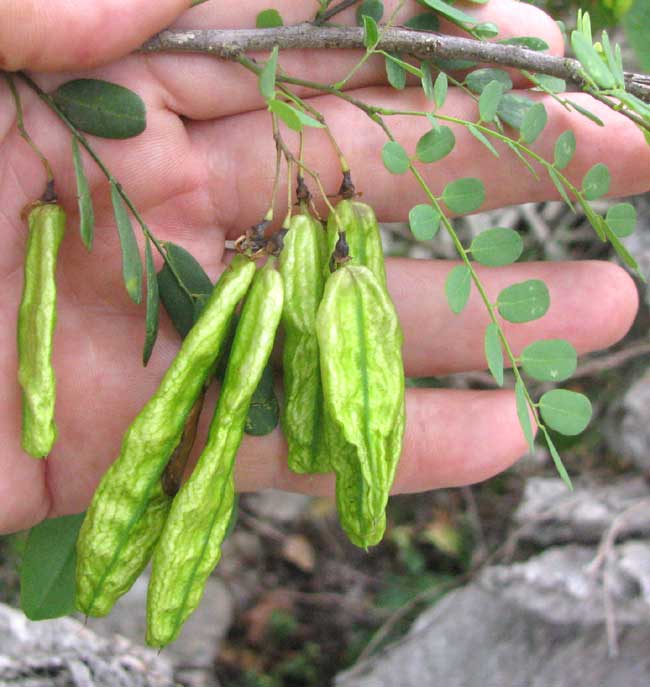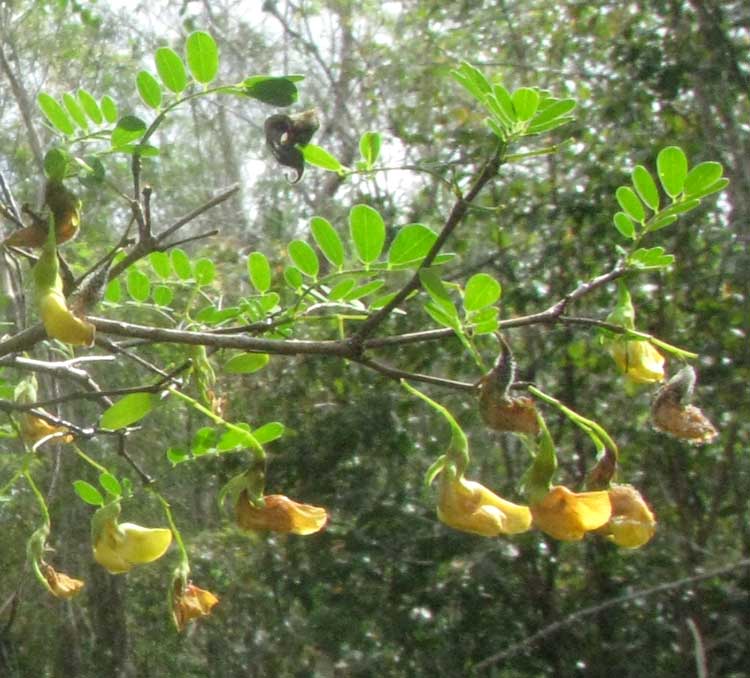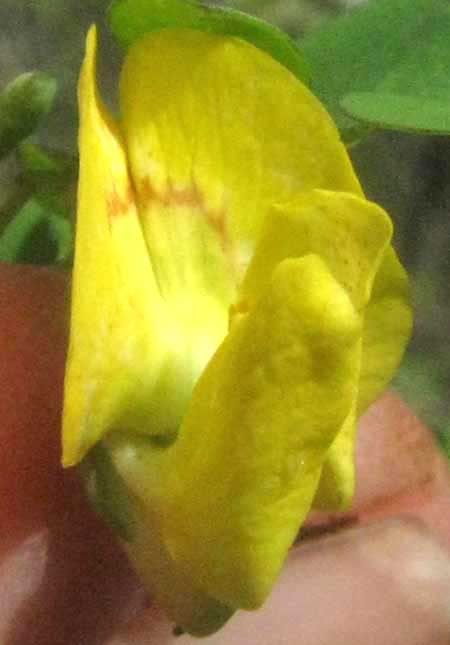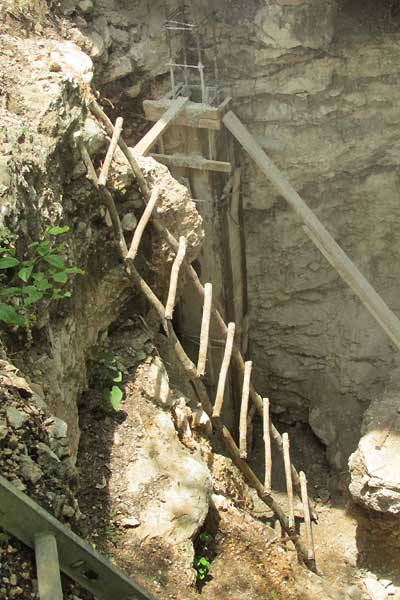Excerpts from Jim Conrad's
Naturalist Newsletter

from the March 11, 2012 Newsletter issued from Hacienda Chichen Resort beside Chichén Itzá Ruins; limestone bedrock; elevation ~39m (~128ft), N20.675°, W88.569°; central Yucatán state, MÉXICO
DIPHYSA SHRUB
Typically if you see the fruit, or bean-bearing legume, of a member of the ubiquitous Bean Family, you recognize right off what you're seeing. However, there's a Bean Family member fruiting here nowadays whose fruits don't look like legumes. They're shown above. Those legumes are " inflated," or bladder-like, with the beans suspended inside them. At least the leaves look right for the Bean Family, a bit like North America's Black Locust leaves.
This is DIPHYSA CARTHAGENENSIS, found from southern Mexico to northern South America. There is no good English name for it, though the Maya, with their eye for the unusual, have several.
It happens that last February I photographed the shrub's flowers but was unable to identify them. You can see the interesting way the yellow blossoms hang below:

And a front view of an individual blossom is shown below:

The online, free Atlas de las Plantas de la Medicina Tradicional Mexicana reports that the main medicinal use for the species is against respiratory ailments, but also it says that in some places a cataplasm is made of the leaves to heal wounds and inflammations. Sometimes infusions of its leaves are used against fevers. Inhaling the air off freshly macerated leaves prevents motion sickness. In some places drinking water in which ground bark has been steeped is used against snakebite, but here in the Yucatán the same concoction is used for dysentery.
As so often is the case with these medicinal herbs, the reported uses are so varied and inconsistent with one another that you suspect the efficacy of them all. The Atlas comments on the lack of experimental data to back up the claims.
from the June 18, 2017 Newsletter issued from Rancho Regensis north of Valladolid, Yucatán, MÉXICO;
elevation ~40m (~130 ft), N~20.876°, W~88.170°
DZUDZUC THE LADDER TREE
The rancho's Maya crew is underpinning the part of the hut I live in, the porch of which partly extends over a deep pit. For a couple of weeks they've been digging away crumbly limestone below the porch, to make way for a concrete column. The resulting limestone rubble on the pit's floor was shoveled into discarded livestock-feedsacks, which were slung over the shoulders, and carried outside the pit, using a homemade ladder. The strength and endurance of the Maya crew was impressive, but also was the flimsy-looking ladder, which didn't at all look capable of bearing all that weight. You can see the ladder below:

The metal ladder, part of which is visible at the picture's lower, left corner, appeared only when the concrete-pouring crew arrived.
I asked my Maya friends what tree they'd made the ladder from. "Dzudzuc," they replied, and everyone had a story about how strong and resistant to decay Dzudzuc wood is. When I asked Juan if he could show me a Dzudzuc tree he instantly steeped into the woods, grabbed a young tree's trunk, and declared it a Dzudzuc. Dzudzuc is very common here, at least in the thin soil atop the limestone mound on which I live. It's Diphysa carthagenensis, profiled above.